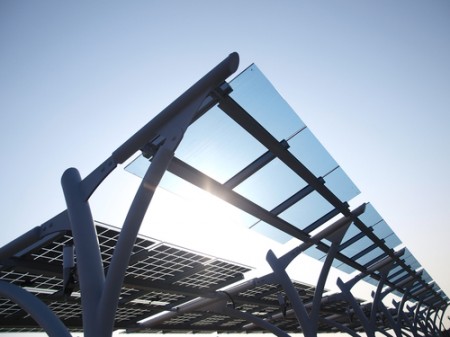By Justin Guay, Sierra Club
Solar installations grew at a blistering pace in 2010 – growing by 73% compared to 2009. This situation was enabled in large part by prices that have dropped 60% in the past three years alone. Given the rapidly changing economics, there is enormous interest in the first phase of India’s solar mission, which currently has 80 MW operational, and 620 MW more in the pipeline. However, as the solar boom kicks into full swing with generous incentives producing larger and larger projects, it’s vital that the broader transformative opportunity that distributed solar represents not be lost.
It is hard to grasp just how vast the solar boom is shaping up to be. Last year alone global investors pumped a record $211 billion into renewable, 33% more than 2009, and 540% more than 2004.
For the first time, more of this investment ($72 billion) came from developing countries than developed ($70 billion). Despite massive Chinese investments, a significant driver of the renewable energy investment in developing countries has been a push for energy access in rural areas where centralized grid extension has failed – a point made clear by the fact that solar investments ($86 billion) nearly matched wind investments ($93 billion) in 2010 when small-scale projects are included.

Nowhere is this truer than India, where solar investment has been driven almost exclusively by off grid applications. In fact, until very recently over 97% of all solar PV applications were in off-grid settings (PDF); Rural Indians are simplytired of waiting for the promises of centralized grid extension which, despite a 60% increase over the past decade, has only increased energy access by 10%.
Others, including policy think tank Prayas, have suggested that the mission’s priorities must be realigned to reflect domestic realities: “The success of the (National Solar Mission) lies in urgently providing solar lighting systems and off-grid solar power to a third of India’s population that is unlikely to have proper access to electricity in the near future.”
These calls are backed by the International Energy Agency’s projections (PDF)that ensuring universal energy access by 2030 requires 70% of all energy investment be channeled to micro-grids or off-grid investments – not centralized power supply and grid extension.
We have 1.2 billion reasons to heed the IEA’s advice. A shift towards large-scale centralized projects fails largely because it attempts to project 20th century approaches onto a once-in-a-generation transformative opportunity. Energy poverty is already driving social entrepreneurs to develop unique innovations for the poor that create local energy economies capable of delivering what billions of dollars, and years of centralized power plants, have failed to deliver: clean energy access (PDF).
Just as the decision to abandon the horse for the internal combustion engine rather than the electric engine shaped the course of history, our approach to solar will determine the fate of hundreds of millions around the world. Now is the time to seize this opportunity, now is the time to get it right.
 Editor’s Note: This column comes to us courtesy of Sierra Club. Author credit goes to Justin Guay, Sierra Club International Program.
Editor’s Note: This column comes to us courtesy of Sierra Club. Author credit goes to Justin Guay, Sierra Club International Program.